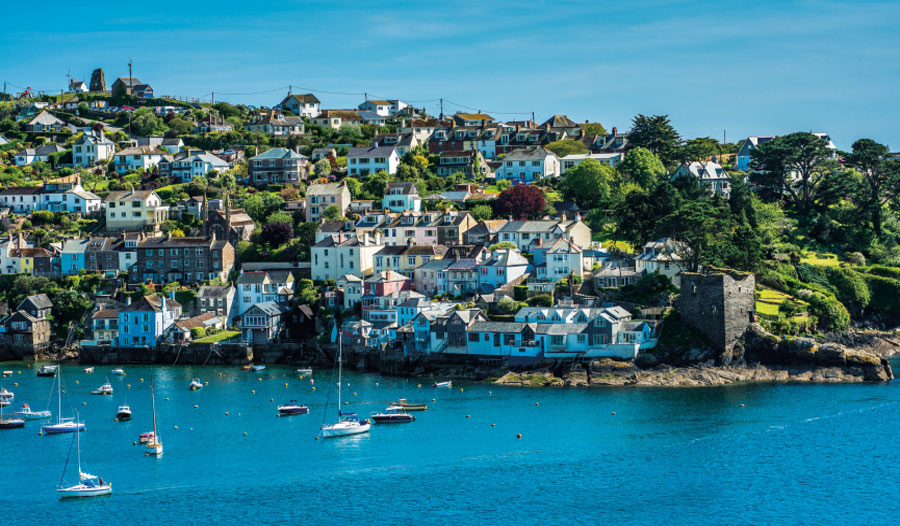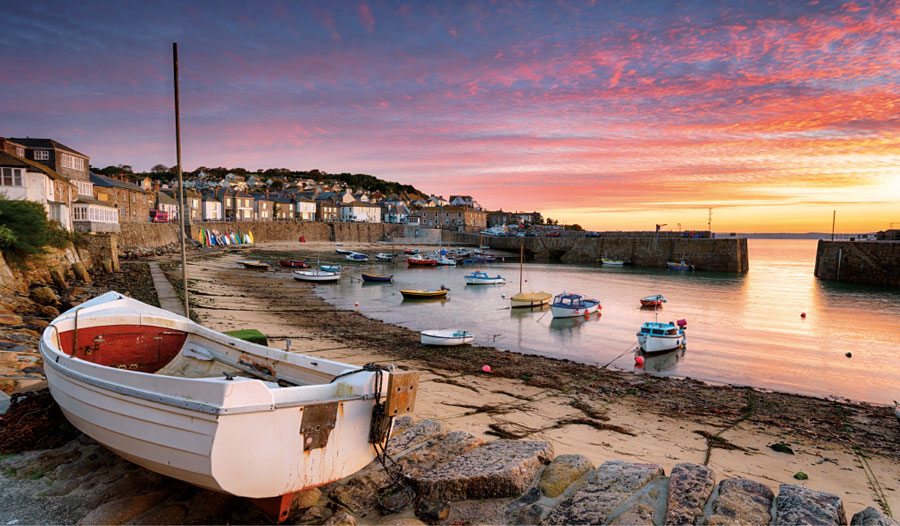
I love to visit the localities and villages where some of our most illustrious writers lived and created their best-loved novels. You could start at Morwenstow, near Bude, and visit the Hawker’s Hut. This ramshackle turf-roofed shed was built by the opium-smoking priest and poet Robert Stephen Hawker (1803-75), who wrote the unofficial Cornish national anthem, The Song
of Western Men.
Or perhaps you would rather begin with Daphne du Maurier, who lived in the Fowey area on the south coast for many years (she is celebrated annually there with the Fowey Festival). She set her novel Frenchman’s Creek in Helford, south-west of Falmouth.
John Betjemen famously reminisced about train rides to Padstow, on the north coast, while Dylan Thomas and his new wife wed in 1937 ‘quietly and demonstrably’ at Penzance Register Office. They exchanged rings made of Cornish silver and had a suitably drunken reception at a little hotel in the nearby village of Mousehole - just over an hour’s walk away from Penzance. Indeed, Mousehole harbour still looks much the same today as it did then. It almost looks like it has been created in miniature: tiny fishing boats, a quay lined with cottages and a narrow harbour mouth which provides a haven in bad weather.

Back to the aforementioned Ross Poldark. Winston Graham, who wrote the 12 novels in the series, lived in Cornwall for 34 years. The setting for the books was the town where he lived, Perranporth, on the north coast not far from Newquay - something not portrayed in the TV adaptations, which were filmed in the far west.
There’s a dramatic but moderate walk between Perranporth and Trevellas (check out routes on iwalkcornwall.co.uk) which takes in knife-edge cliffs, country lanes and the mineral lodes on Cligga Head, not to mention shipwreck sites along the coast.
In 1915 D.H. Lawrence and his wife Frieda moved to Cornwall and stayed for nearly two years at Tregerthen Cottage, near Zennor, where Lawrence completed the manuscript for Women in Love. The writer was escaping what he described as the oppressiveness of London and his dream had been to set up an ideal artistic-philosophical haven of like-minded people. The idea foundered but Lawrence never lost his love for the county.
‘When we come over the shoulder of the wild hill, above the sea to Zennor,’ he wrote, ‘I felt we were coming into the Promised Land.’ A beautiful walk from Zennor to St Ives will underline exactly what he meant and takes around two hours.
Virginia Woolf wrote that spending her childhood summers in St Ives in the 1880s gave her ‘the best beginning to a life conceivable’. Henry James, George Meredith and James Russell Lowell were just a few of the regular visitors to her family’s summer home.
The location also inspired what has become known as Woolf’s St Ives trilogy:
Jacob’s Room, To the Lighthouse and The Waves. Today there’s a Tate Gallery in St Ives, in an incredible location. And it’s worth paying a visit to the home and studio of one of the leading sculptors of the 20th century, Barbara Hepworth, who lived in the town for 25 years.
Whichever region of Cornwall you visit will have its own unique charms. And after stretching your legs you should even feel justified in having a Cornish pasty or one of its famous cream teas. In Cornwall the jam goes on first, by the way, before the clotted cream.
◆ Useful links for organised walks and tours include wanderlust.co.uk, theculturetrip.com and macsadventure.com
Pictures: Adobe Stock








